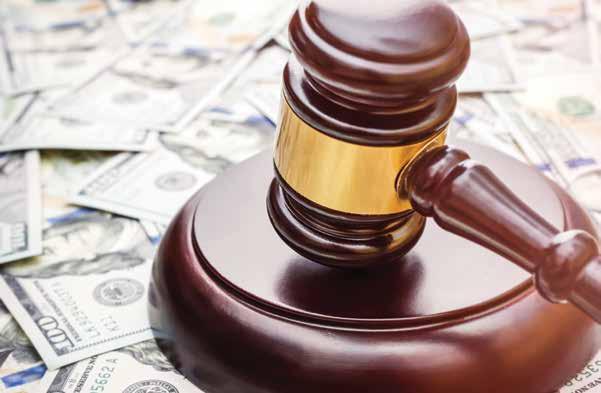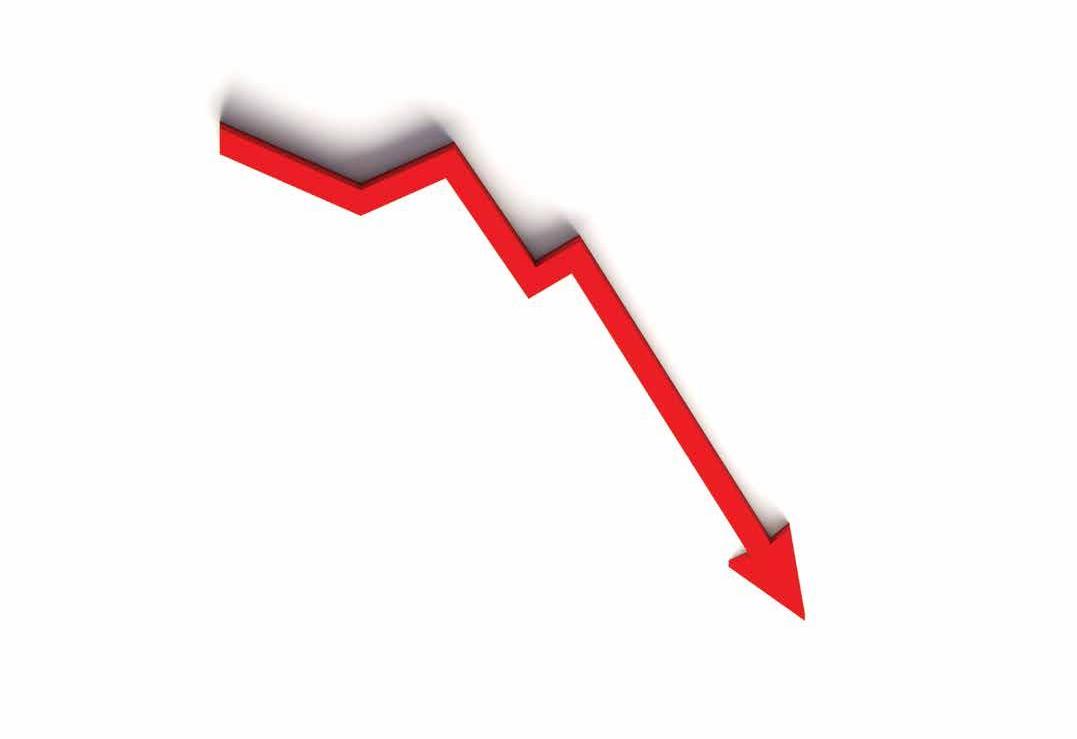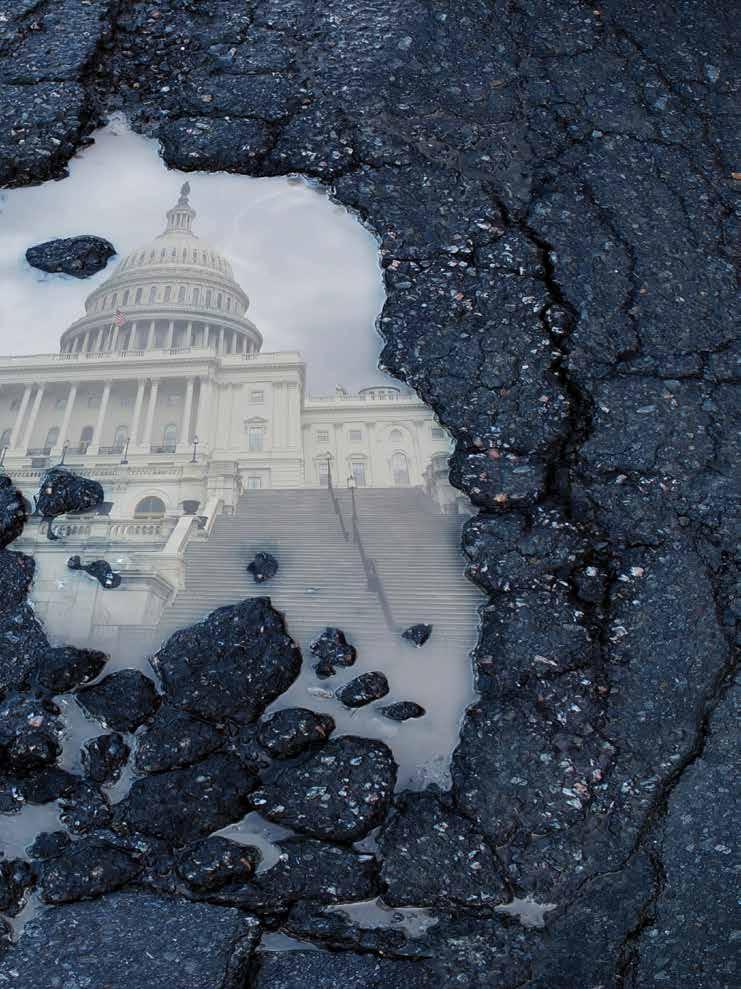
7 minute read
Libor: Tethered to a Sinking Ship?
LIBOR TETHERED TO A SINKING SHIP?
By J. Cliff McKinney, ll • Quattlebaum, Grooms, & Tull PLLC
the London Interbank Offered Rate (“LIBOR”) is one of the most common reference rates used by banks for mortgages, swaps, and many other financial instruments. Unfortunately, scandal has overtaken LIBOR resulting in an uncertain future. LIBOR is set to be scuttled and will cease to exist in its current form in 2021. This leaves many banks Regulators and law enforcement agencies in Britain, the United States, and other countries levied billions in fines against various member institutions. Most notably, UBS agreed to pay $1.5 billion in fines and penalties for its role in the scandals. Several large banks remain under investigation. both confused and potentially exposed to riptides of disruption as LIBOR sinks beneath the waves of financial history. The Slow Sinking and Possible Life Rafts In addition to hitting a reef of scandals, LIBOR is also arguably
Brief History and Scandal based on an outdated methodology. Some commentators note that the pool size of the panel banks is too small, a prob
LIBOR originated in the 1970s originally as an interest rate for lem exacerbated by the reduced pool of panel banks after the offshore Eurodollar transactions. The British Bankers’ Associa2008 financial crisis. This small pool results in a methodology tion restructured LIBOR in the mid-1980s into a rate that banks that is susceptible to manipulation and sample-size error. can borrow from one another in London. LIBOR operates through a system of more than 200 member banks across sixty In the wake of the scandals and criticism, the United Kingdom’s countries. Member banks include many of the world’s largest Financial Conduct Authority announced in 2017 that LIBOR as financial institutions, including the Bank of England, Bank of it currently exists will phase out by the end of 2021. LIBOR may
America, Bank of Tokyo, and Citibank. LIBOR rates are pubcontinue to exist in some form after 2021, but the panel banks lished in various currencies, including the US dollar, the British will no longer be required to participate, which will effectively pound, and the Japanese yen. At its peak, approximately 60% end LIBOR’s usefulness. Unfortunately, if LIBOR does survive of all prime adjustable-rate mortgages and nearly all subprime in some form after 2021, it might create even more ambiguity mortgages were indexed to LIBOR. Today, it is estimated that when instruments have not been updated to a new reference between $200 trillion to $300 trillion in financial instruments rate. Making matters worse, there are contingencies in the reference LIBOR. LIBOR relies on accurate input and data from phase-out plan that could result in LIBOR ending prior to Deselect member institutions (i.e., the panel banks), to generate cember 31, 2021. the rate daily. Regulators and financial institutions around the world have
Unfortunately, several panel banks began manipulating the been scrambling to create a replacement for LIBOR. The Unitinformation used to generate LIBOR, which was unveiled in ed States, United Kingdom, Japan, European Union, Canada, a 2008 exposé piece by The Wall Street Journal. This led to a Switzerland, Australia, and Hong Kong have all formed transiseries of investigations that found significant criminal activity. tion committees to replace LIBOR in their respective countries,
The London Interbank Offered Rate (“LIBOR”) is one of the most common reference rates used by banks for mortgages, swaps, and many other financial instruments. Unfortunately, scandal has overtaken LIBOR resulting in an uncertain future. LIBOR is set to be scuttled and will cease to exist in its current form in 2021. This leaves many banks both confused and potentially exposed to riptides of disruption as LIBOR sinks beneath the waves of financial history.
Brief History and Scandal
LIBOR originated in the 1970s originally as an interest rate for offshore Eurodollar transactions. The British Bankers’ Association restructured LIBOR in the mid-1980s into a rate that banks can borrow from one another in London. LIBOR operates through a system of more than 200 member banks across sixty countries. Member banks include many of the world’s largest financial institutions, including the Bank of England, Bank of America, Bank of Tokyo, and Citibank. LIBOR rates are published in various currencies, including the US dollar, the British pound, and the Japanese yen. At its peak, approximately 60% of all prime adjustable-rate mortgages and nearly all subprime mortgages were indexed to LIBOR. Today, it is estimated that between $200 trillion to $300 trillion in financial instruments reference LIBOR. LIBOR relies on accurate input and data from select member institutions (i.e., the panel banks), to generate the rate daily.
Unfortunately, several panel banks began manipulating the information used to generate LIBOR, which was unveiled in a 2008 exposé piece by The Wall Street Journal. This led to a series of investigations that found significant criminal activity. Regulators and law enforcement agencies in Britain, the United States, and other countries levied billions in fines against various member institutions. Most notably, UBS agreed to pay $1.5 billion in fines and penalties for its role in the scandals. Several large banks remain under investigation.
The Slow Sinking and Possible Life Rafts
In addition to hitting a reef of scandals, LIBOR is also arguably based on an outdated methodology. Some commentators note that the pool size of the panel banks is too small, a problem exacerbated by the reduced pool of panel banks after the 2008 financial crisis. This small pool results in a methodology that is susceptible to manipulation and sample-size error.
In the wake of the scandals and criticism, the United Kingdom’s Financial Conduct Authority announced in 2017 that LIBOR as it currently exists will phase out by the end of 2021. LIBOR may continue to exist in some form after 2021, but the panel banks will no longer be required to participate, which will effectively end LIBOR’s usefulness. Unfortunately, if LIBOR does survive in some form after 2021, it might create even more ambiguity when instruments have not been updated to a new reference rate. Making matters worse, there are contingencies in the phase-out plan that could result in LIBOR ending prior to December 31, 2021. ed States, United Kingdom, Japan, European Union, Canada, Switzerland, Australia, and Hong Kong have all formed transition committees to replace LIBOR in their respective countries, resulting in a proliferation of alternative indices. The America transition committee, the Alternative Reference Rates Committee (“ARRC”), settled on the Secured Overnight Financing Rate (“SOFR”) as the recommended replacement for US dollar denominated transactions.
The New York Federal Reserve began publishing SOFR in April 2018. SOFR is based on Treasuries loaned or borrowed overnight in the repurchase market. The New York Federal Reserve calculates SOFR every morning using data from the previous overnight Treasury repurchase market activity. Some banks and Fannie Mae began using the rate in mid-2018, and its use is becoming more common.
How to Untether from LIBOR
All banks need to take immediate steps to address the LIBOR problem. First, banks should prepare a list of all financial instruments that are linked to LIBOR with maturity dates or extensions beyond 2021. Second, banks need to review each of these instruments to see if there is an alternative for LIBOR already provided. Third, banks need to negotiate with borrowers and counterparties to include LIBOR replacement clauses where appropriate.
Banks should avoid the temptation to just swap SOFR for LIBOR, which are not apples-to-apples products. SOFR and LIBOR are based on fundamentally different data and risk profiles. Consequently, the amount of applicable basis points will need to be adjusted to achieve the same effective rate. Any agreement to substitute LIBOR needs to be carefully worded.
Inevitably, there will be financial instruments not updated prior to the end of LIBOR. For example, when the Federal Reserve abolished the Discount Rate in 2003, it created a constitutional crisis in Arkansas where the maximum lawful rate of interest was pegged at 5% plus the Discount Rate. Some argued that in the absence of the Discount Rate, the maximum rate in Arkansas should be 5% and others even argued that no interest could be charged. While the Supreme Court of Arkansas ultimately resolved this in 2006 in favor of selecting the closest replacement to the Discount Rate, there were three years of general confusion and litigation. This is an analogous situation and there may be similar arguments that LIBOR linked loans are either limited to the number of stated basis points or that no interest can be charged. Litigation is inevitable.
LIBOR is like a sinking ship soon to go under. The question now is who will be pulled down with it and how much collateral damage will result. Banks can minimize risk by immediately switching to an alternative rate for all new financial instruments and by proactively addressing those situations where legacy instruments will extend past the end of LIBOR. Now is not the time to rearrange the chairs on the deck of the Titanic—now is the time to find a lifeboat and sail away from the wreck.










